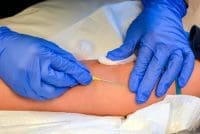A firestorm in women’s health erupted on July 9th, 2002 when the NIH prematurely terminated one arm of their Women’s Health Initiative Study (WHI) because of “increases in breast cancer, coronary heart disease (CHD), stroke, and pulmonary embolism in study participants on estrogen plus progestin compared to women taking placebo pills. There were noteworthy benefits of estrogen plus progestin, including fewer cases of hip fractures and colon cancer, but on balance the harm was greater than the benefit”.
WHI spokespeople cautioned against all use of hormone therapy after menopause, citing public health concerns. The nature of this exaggerated, misleading, and sensationalistic announcement was recognized by an informed few, but missed completely by the media and much of organized medicine was the fact that except for stroke in older women and blood clots, the absolute levels of risk and benefit in all WHI outcomes were rare.
The WHI study, planned largely by cardiologists and epidemiologists to confirm earlier research showing a heart protective effect of PHT, but without initial input from women’s health experts, was never designed to investigate menopause. Indeed, symptomatic women were largely excluded to reduce the likelihood of dropouts. To ensure adequate numbers of cardiovascular events the majority of the volunteers were women older than 60.
At the initiation of the WHI, clinical use of postmenopausal estrogen and progestogen therapy (PHT) had been mostly limited to treating menopause-related symptoms in women aged between 40 and 60, and for prevention of bone fractures. There was a growing tendency to prescribe hormones for prevention of cardiovascular disease.
The title of their first report highlights their immediate misinterpretation of their results: “Risks and benefits of estrogen and progestin in healthy postmenopausal women”. Their population was neither completely healthy, nor simply postmenopausal. Women up to 79 years of age were started on hormones, something unusual in clinical practice. Had the title been something like “Risks and benefits of initiation of estrogen and progestin in women aged 50 to 79 by decade of age and time since menopause,” and the WHI investigators strictly interpreted their results in that way, they would not now be on the defensive. Instead, many subsequent WHI publications demonstrated some degree of disconnect between their study objectives and results, and their conclusions, usually embellishing negative findings at the expense of the positive, and extrapolating findings in older women to those at perimenopause.
These issues raise serious questions about the credibility of the WHI writing groups and of the NIH, and whether one billion dollars was well spent. The absolute risks in the populations studied, broken down into age groups, are quite revealing. In women less than age 60, estrogen compared to placebo showed fewer cases of CHD, strokes, diabetes, breast cancers, fractures, and deaths. The only increased adverse event was blood clots. Even more striking, their data shows a significant risk reduction of CHD in women on EPT who were less than 10 years from menopause.
While the WHI data for early menopausal woman clearly demonstrates that benefits outweigh risks, women themselves remain fearful of PHT. Even now, the key WHI investigators are behaving like the divorced husband who murders his ex-wife, and then claims child custody because his children have no mother. They demonstrate a persistent need to control the indications for HT after menopause solely on the basis of their own publications, ignoring entirely the wealth of other published evidence, their own data, or that the WHI was never a study about menopause.
We now face two questions – has women’s health after menopause been helped or harmed by the way these findings were presented, and if harmed, what needs to be done to put things right? The real story of the WHI may turn out to be incalculable damage wrought on younger peri- and early postmenopausal women who discontinued their therapy in millions and are now several years beyond menopause and off hormones. Not only did they suffer through menopause-related symptoms, but the very women who might have been protected from heart disease, the single biggest killer of women over 50, and osteoporosis, one of the major causes of long-term disability, are the ones potentially most damaged by the WHI. Women who discontinued PHT have significantly increased risk of hip fracture compared with women who continued taking HT, with estimates of over 43,000 extra bone fractures per year in the USA. The number of increased cardiovascular events in young women who discontinued ET may be even more staggering. The WHI results clearly demonstrate no increase in cardiovascular risk in women aged 50-59, and for the first time ever an intervention, namely estrogen, has been demonstrated to actually improve the health of the women’s coronary arteries.
This is a remarkable outcome. Given that almost 50% of women will die from cardiovascular disease, the public health impact of this response could be enormous.
“The last nail in the coffin of hormone therapy,” the mantra often repeated by WHI supporters, might actually have caused the opposite outcome of what they hoped and anticipated, an infliction of increased disease and death, and impaired quality of life on early postmenopausal women.
After the entire hullabaloo created by the WHI, current recommendations for postmenopausal use of PHT are virtually back to where we started. For example, The North American Menopause Society (NAMS) concludes: “Recent data support the initiation of HT around the time of menopause to treat menopause-related symptoms and to prevent osteoporosis in women at high risk of fracture.” Yet the number of prescriptions has dropped by nearly 75% compared to 2002. Many women who rejected PHT because of fear of cancer and other problems so exaggerated by the WHI have suffered unnecessarily. Now women with severe symptoms should be reassured by the current state of knowledge, as should health professionals who stopped prescribing.
Questions need to be raised about the WHI investigators and authors. Why did they not present the July 2002 data in 10-year subsets? The lead WHI author told the Wall Street Journal (WSJ) “Our main job at the time was to turn around the prevailing notion that hormones would be useful for long-term prevention of heart disease. That was our objective. This was a worthy objective which we achieved”.
This explanation was absurd when other research showing a protective effect of starting PHT at a younger age was the catalyst to the initiation of the WHI study itself.
Given the enormous damage inflicted on the last generation, what can be done for the current generation now traversing the perimenopause? The harsh indictment that a project designed to benefit women’s health has boomeranged mandates urgent independent scrutiny of key WHI publications to determine whether there was stretching of the truth. In that case urgent public education steps must be initiated before even more harm can be inflicted on women’s health.
It is too late for the WHI investigators to develop a transparent and comprehensive summary of their own results – they have quite simply lost the public trust.
There are two obvious and immediate actions to be called for:
1. The FDA needs to revisit the black box warnings on postmenopausal hormones. Specifically, there needs to be a separation of the advisories for estrogen alone from estrogen and progestogen combined usage.
2. The irresponsible approach taken by the NIH in reporting the data, and their consistent failure to provide a comprehensive final analysis and overview leaves little alternate but to call for an independent commission, free of conflicts of interest including with the NIH itself, to do precisely that. A comprehensive summary of the key WHI overall results should be brought together in a single white paper.
Women progressing through and beyond menopause in the next decade need to be spared the unnecessary harm inflicted on their sisters of the previous decade, as resulted from the rush to publication of incomplete and poorly analyzed data by the Women’s Health Initiative in July 2002.
Wulf H Utian MD, PhD, DSc, FRCOG, FACOG, FICS
Professor Emeritus, Reproductive Biology, Case Western Reserve University.
Executive Director Emeritus, The North American Menopause Society
Honorary Past President, The International menopause Society
His latest book is “Change Your Menopause” (Utian Press, 2011).
Author’s address:
wulf@utianllc.com


















